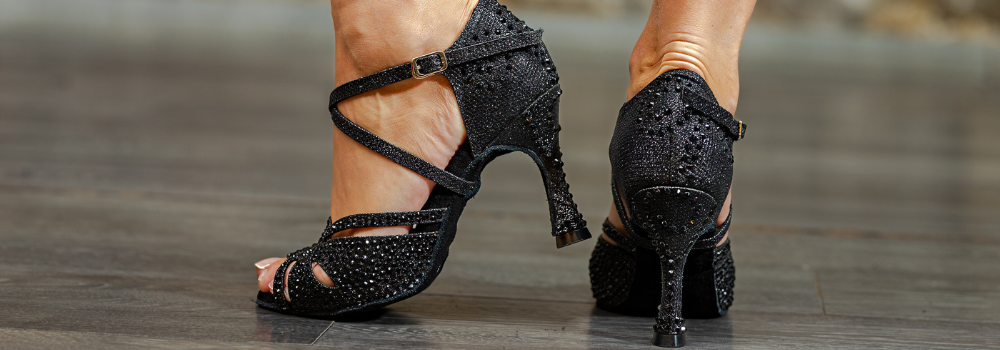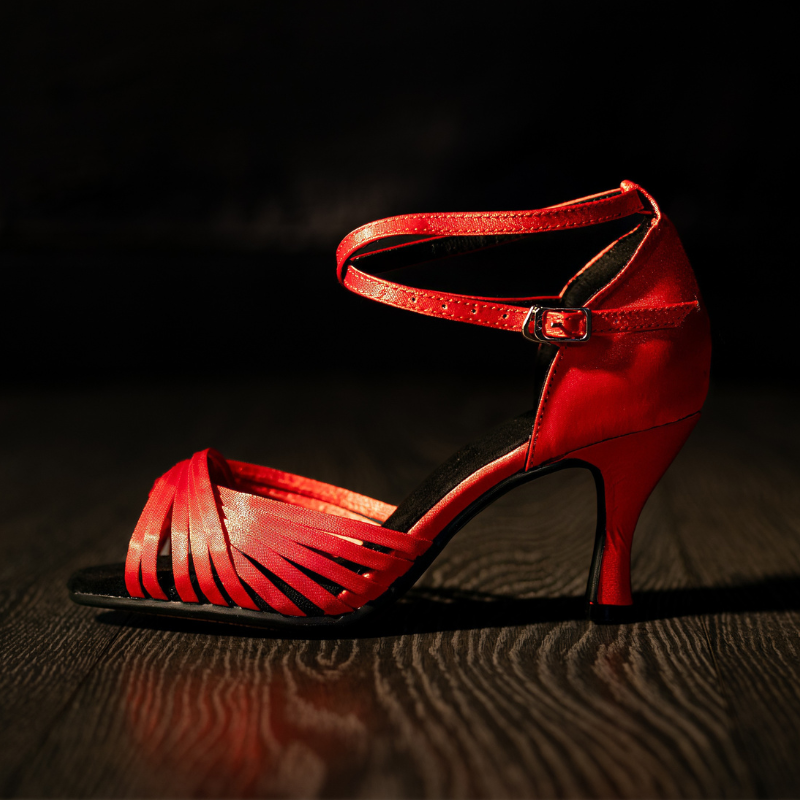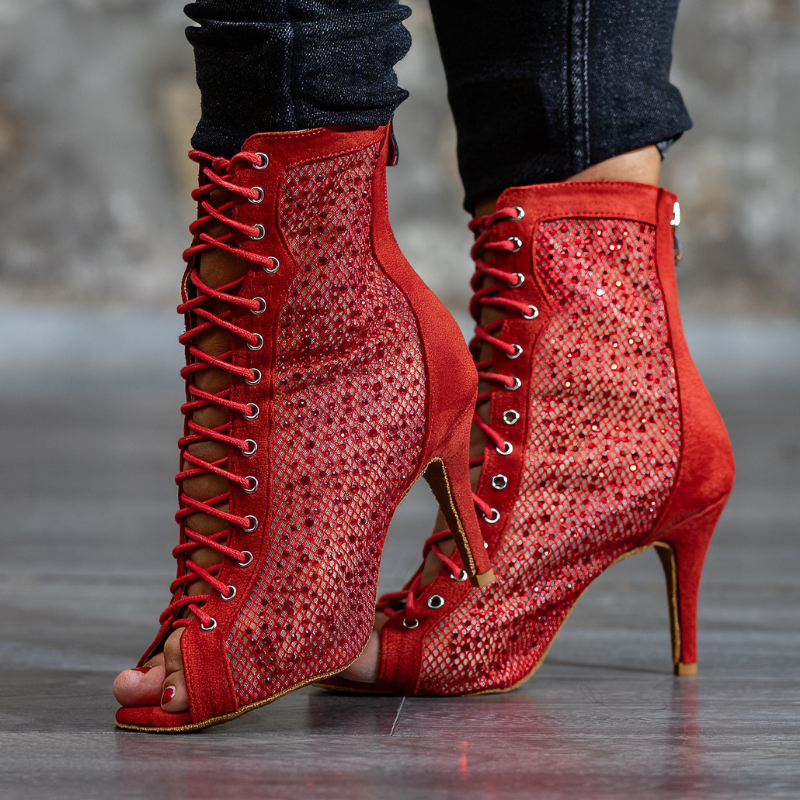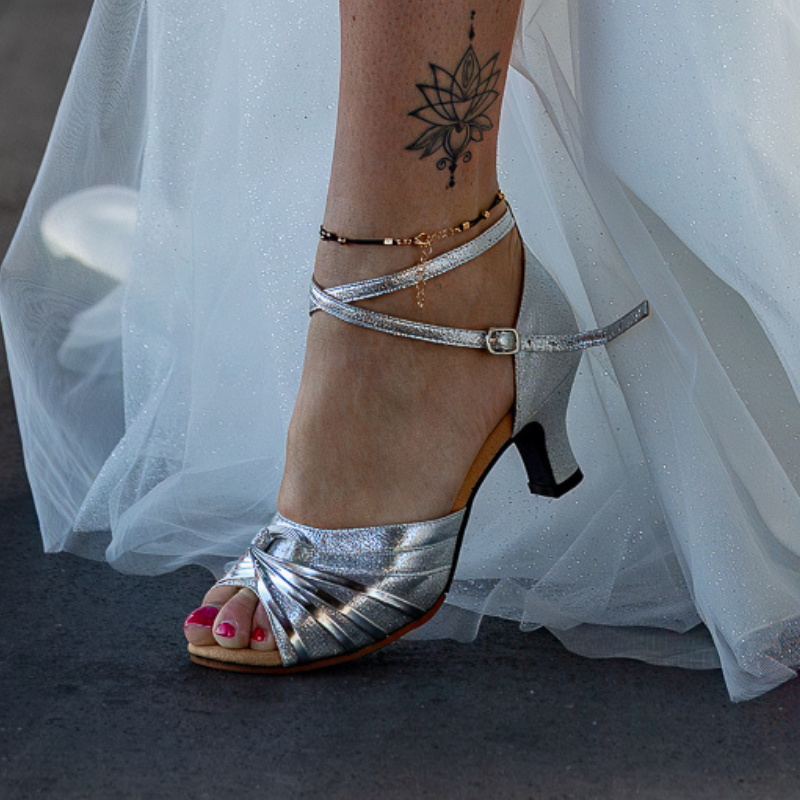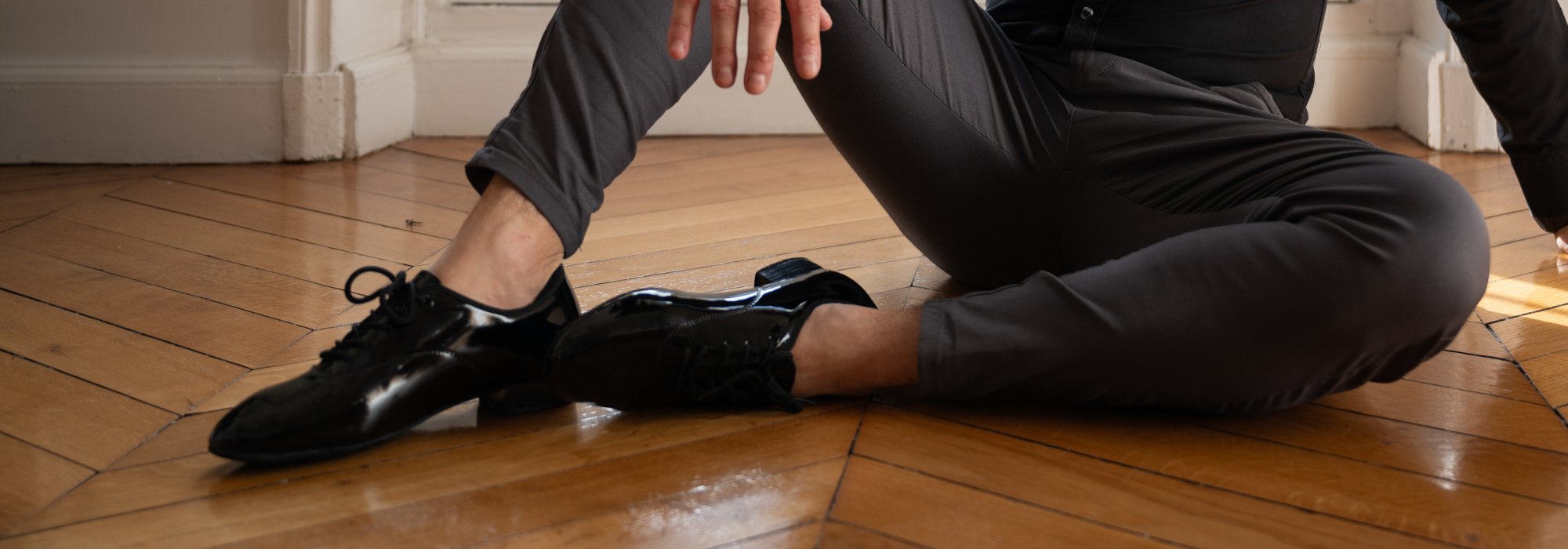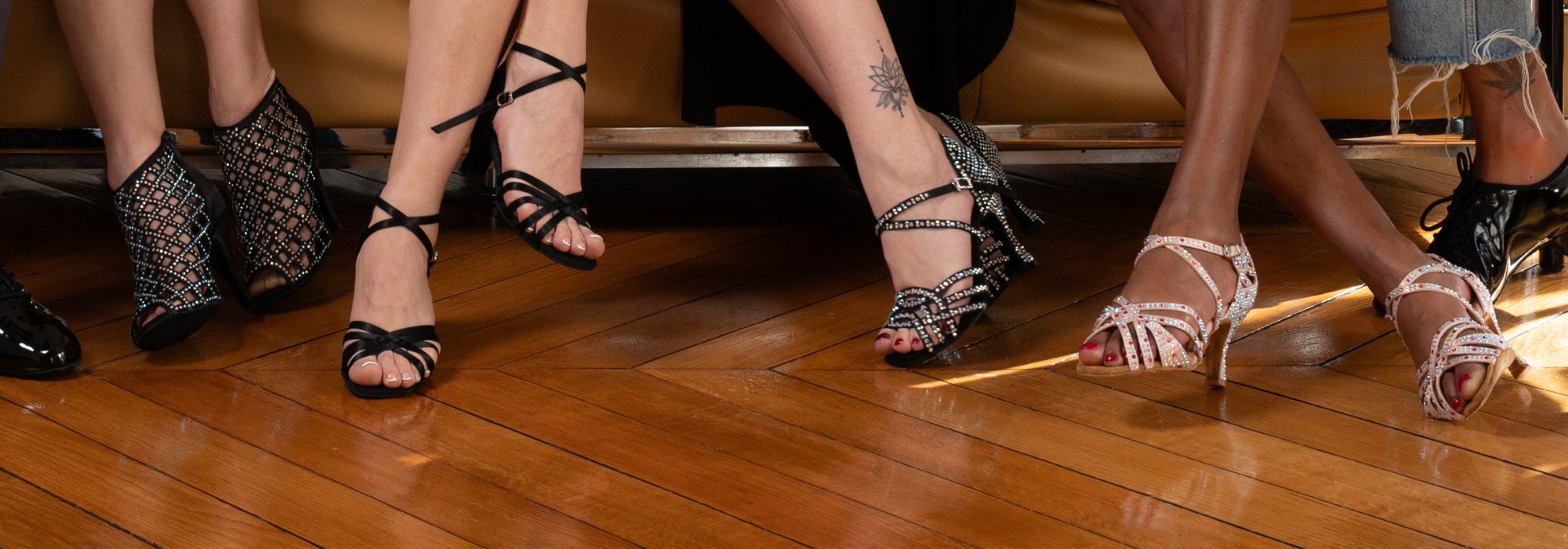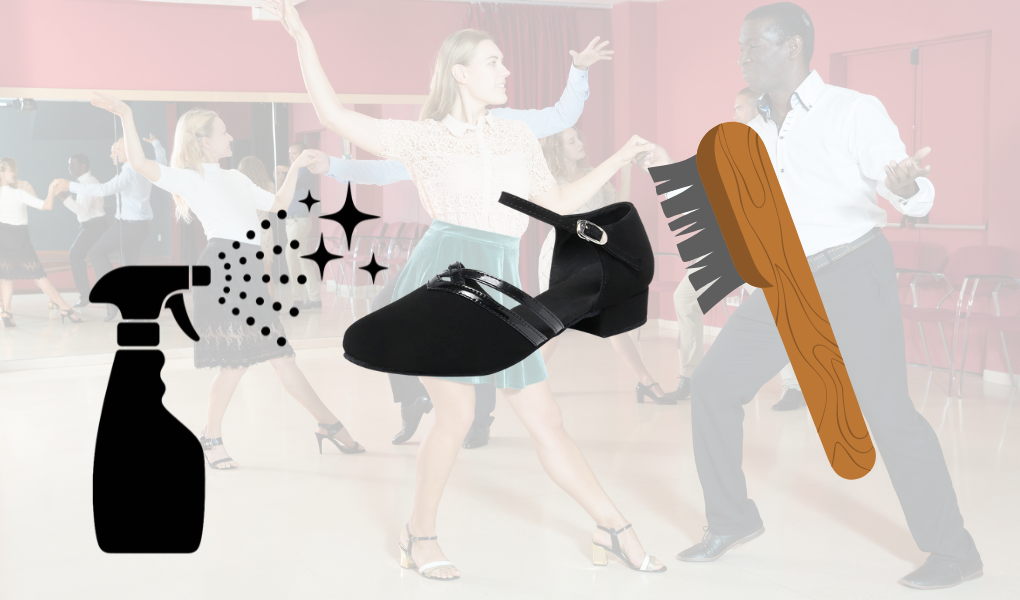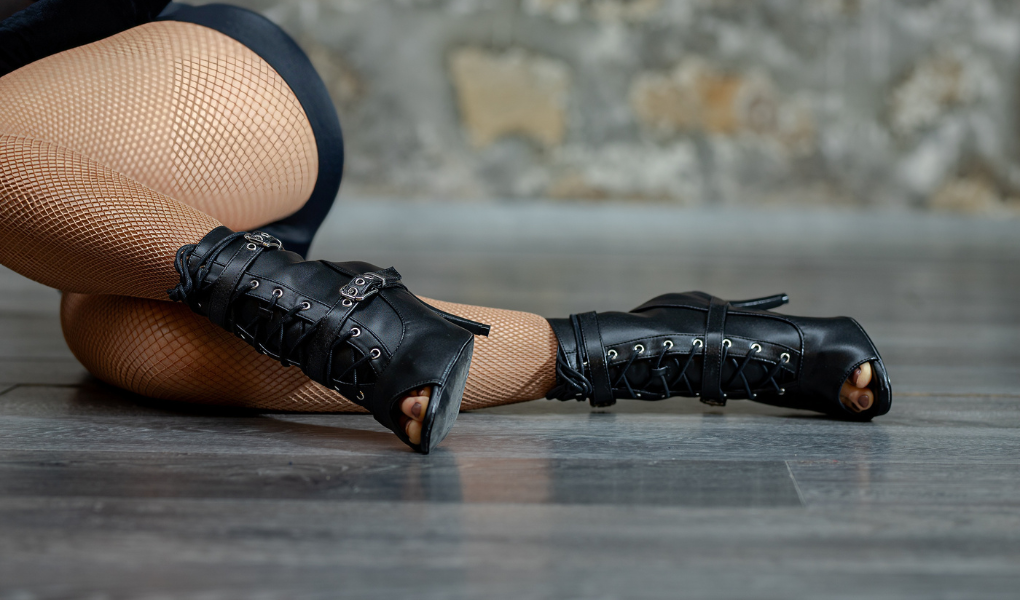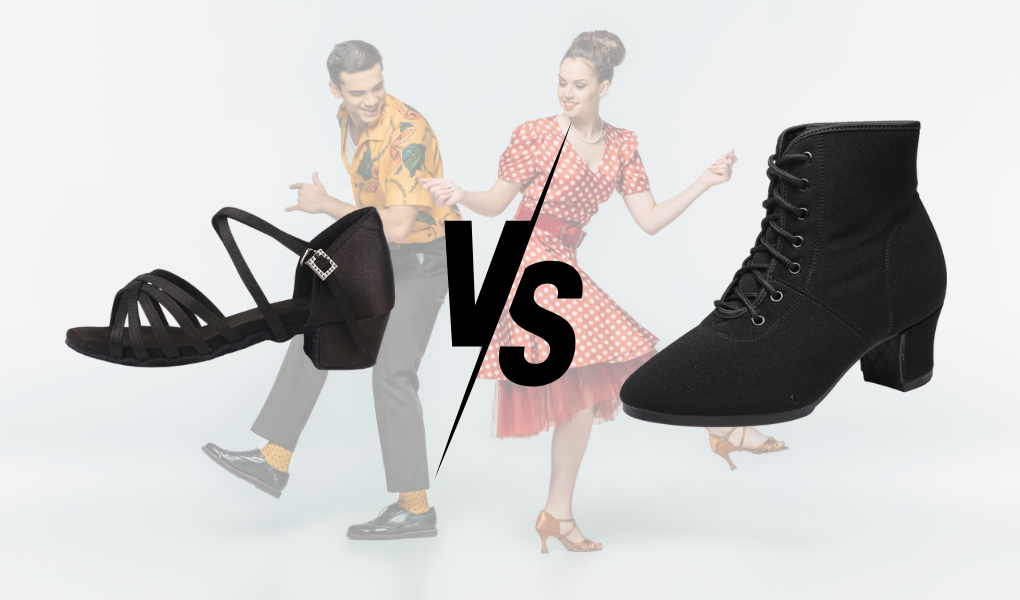The most common mistakes when buying your first Heels
Do you feel ready to dance on the clouds and tame the stage in heels? Buy your first heels shoes is an emotional step for any beginner... but beware of purchasing mistakes! Whether it's salsa, bachata or heels dancing, choosing the right pair can transform your experience — or, on the contrary, cause you to trip up at the first step. Discover in this article the pitfalls to avoid when rushing headfirst into this adventure. Did you know that a bad decision can impact your comfort, posture and stability? Follow me: I will accompany you step by step to ensure a brilliant entry into the world of heels, in safety, elegance and solid support.
Ignoring the ideal size: a wrong step from the start
The trap of approximate sizes

The first mistake buying heels for beginners is choosing a size at random, or giving in to the temptation of a model that is just “almost your size”. Unlike sneakers, dance heels must conform to the shape of your foot to ensure comfort and support. A heel that is too big will cause slipping and lack of stability, while a model that is too tight will cut off your circulation and damage your posture.
- Measure your foot at the end of the day, when it is at its largest.
- Use the detailed size guides offered on the online store.
- Do not hesitate to contact customer service for personalized advice.
Rely only on its “city” size
Another classic pitfall: thinking that your usual size will be enough. Since dance shoes have specific cuts, it is not uncommon to have to adjust by half a size for optimal support and freedom of movement that gives the impression of waltzing on clouds.
Neglecting the quality of support and stability
Shoes too loose or too stiff

Good support is like a trusted partner hand: it guides and protects you. Too often, we underestimate the importance of arch, heel reinforcement and adapted straps. The beginnings in heels are then accompanied by a wobbly heel, uncertain support and dreaded slips.
- Select models with several attachment points (cross straps, buckles, elastics).
- Checks sole rigidity and arch support.
Let the sole dictate its dance
The sole is your connection to the track! It must be flexible to follow your movements, but strong to absorb shock. Beware of leather or faux leather that is too smooth, causing uncontrolled slippage among beginners...
- Opt for suede soles: ideal grip and flexibility.
- If you have to dance on several surfaces, consider models with a mixed sole.
Being seduced by appearance more than comfort
The temptation of glitter to the detriment of your feet

A high heel, rhinestones, a dizzying arch: the beauty of a shoe can easily mask the discomfort that awaits. Resists the purely aesthetic appeal! What's the point of shining if every step becomes torture? Well thought-out comfort will give you that queenly look and radiant smile that are worth all the glitter...
- Always try your shoes in real conditions — standing, moving.
- Give yourself a few minutes to feel the pressure or areas of discomfort.
Underestimating pain management in heels
The first lessons can be surprising. Listen to your body and choose a moderate heel for the first few months. It's better to dance lower and shine than to give up because of blisters or cramps.
Ignoring the importance of posture in heels
Confusing walking and dancing in heels

When you're starting out, you don't walk in heels like in the street! The supports are different, as is the weight distribution. Not investing in shoes suitable for dancing means exposing yourself to an increased risk of injury and an unsteady posture which “breaks” the desired elegant line.
- Look for a shoe that helps keep your ankles/knees/hips aligned.
- Tests stability when swaying, pivoting, changing direction.
Forgetting the role of the “dancing” heel
A real dance heel has a retracted axis, it absorbs shocks and secures each support. “Fashionable” designs without structure can ruin your efforts and cause you to compensate in unnatural ways.
Misjudging the ideal heel height
Wanting to aim too high from the first pair

Early enthusiasm sometimes pushes you to choose a very high heel, thinking “the higher it is, the better the style!” » But be careful: for a beginner, a reasonable height (6-8 cm) guarantees stability, confidence and peaceful progress. This will help you avoid imbalances and unnecessary muscle tension.
- For strong posture, start with a thick, stable heel.
- Only increase height after a few months of practice.
Ignore the thickness and shape of the heel
A block heel offers more security than a tapered stiletto heel. It pampers your ankle and soothes your apprehensions during your first heels dancing or salsa classes!
Forgetting the importance of the type of closure
Poorly adjusted straps = guaranteed false note
A bad closure (buckle placed too high, elastic of dubious quality) spoils comfort and causes you to lose all support under the foot. Choose adjustable crossed straps or quick fasteners designed for dancing.
- Test the attachment: it should hold without sawing the ankle.
- Avoid slippery ribbons or fragile scratches.
Missing out on adjustability
A model that is too rigid or with few adjustments puts you in a position of latent discomfort. The more your shoe fits the shape of your foot, the more free you will be to express yourself!
Hesitating between leather, imitation and textile: the choice of material
Underestimating the role of material
Leather, satin, suede or imitation… each has its advantages. Soft leather adapts to your shape, satin breathes but marks, faux leather costs less but lasts less. Make your choice according to your needs and your pace of practice.
- For maximum resistance and comfort that improves with time, opt for leather or suede.
- Consider maintenance: certain materials are more easily cleaned.
Skip the “dancing” fitting
Trying to sit down is risky!
Always try on your heels while standing, walking, and mimicking some dance moves. Some pressure points only appear during movement, just like the feeling of balance and support.
- Perform some plies, pivots and weight transfers.
- Note if your heel tips, if your ankle tires too quickly.
Not taking the time to get used to it
To really tame your heels, “dance” them at home for ten minutes a day for the first week. This is the secret to a smooth adaptation, for you and for the shoe!
Neglect theReviews from a coach or a professional
The outside view: more precious than a mirror
A dance teacher or a specialized advisor can detect in the blink of an eye a mistake in purchasing heels and direct you to THE model made for your body type, your discipline, and your level. Don’t hesitate to take advantage of personalized support by contacting us or during an internship!
Underestimating the importance of investment
The short-term economy: false friend, real risk
Betting on inexpensive first heels often means facing poor support, early wear, and even injuries. Investing in a real dance shoe means investing in your development, your pleasure... and your art!
- A good model pays for itself quickly: it goes the distance, protects your joints, and enhances every movement.
- Remember to seek advice before buying; a good shoe is never a coincidence, but an informed choice.
FAQ - Frequently asked questions
How to choose the right heel height to start wearing heels?
To start, choose a height of 6 to 8 cm, with a wide and stable heel. This gives you optimal balance and secure support, avoiding unnecessary pain and the risk of falling when you start dancing in heels.
What material should you choose for comfortable and durable heels?
Leather and suede are ideal for their resistance, their ability to hug the foot and improve over time. Satin is elegant but more fragile. Avoid imitations that are too rigid or slippery if you are looking for stability and longevity.
Is it necessary to try on heels before purchasing?
Yes ! Try-on in motion ensures that the shoe matches your foot, your posture and your dance practice. Even online, rely on precise size guides, and take advantage of feedback if necessary to find the perfect fit.
What should I do if my heels slide too much on the floor?
Recommends suede soles for grip. If you've already done so, you can use a wire brush to revive the grip, or invest in non-slip pads specially designed for dance shoes.
Should I choose different heels for salsa, bachata or heels dancing?
Yes, each discipline has its specificities. For example, salsa prefers lighter, more flexible heels, while heels dancing requires more support and stability due to the powerful movements. Don't hesitate to askReviews from an expert.
How to avoid blisters and pain with new heels?
Wear them gradually at home, with thin socks to gently relax the material. Possibly use gel pads, and apply tape to sensitive areas during the first sessions.
Why are my supports unstable despite good shoes?
Technique matters as much as the shoe! Work on the alignment of your body, the tone of your ankles and learn to distribute the weight on the front of the foot. A coach or a heel technique course can really make the difference.
Discover our heel models, by browsing our SalsaNueva online store Shop, where comfort, posture and elegance are always there for passionate dancers.

